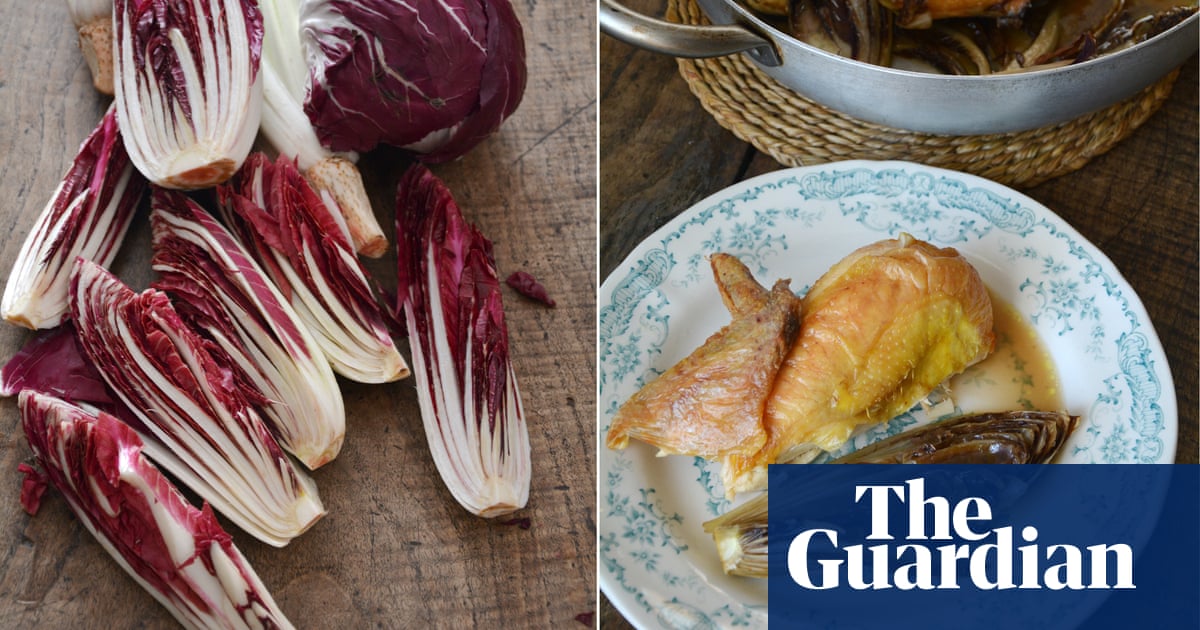
here are 32 ways to say “anchovy” in Italian. Thirty-two regional names, many of them in dialect, for the small, slender fish with silvery sides and receding lower jaw. The most common names, though, for the much-loved chinless wonder are two: alici and acciughe.
While anchovies are abundant in the Mediterranean, Indian and Pacific oceans, they remain rare for many because they are so fragile, deteriorating with every hour they are out of the sea; even more so when they are transported. I see this five days a week at my local market when it receives the previous night’s catch from the fishing port of Anzio. The journey from Anzio into Rome is only 51km – not a problem for most of the fish, iced and insulated in shock-proof polystyrene boxes. The anchovies, however, seem to suffer every bump on the road. That isn’t to say they are not bright-eyed and beautiful; they are – especially at 8am, and even at 9 or 10am. But by midday, the change is visible: a tangible weariness comes over them, even more so on hot days. And then, when you get them home, you need to work fast, gutting and opening them like butterflies, then baking, braising, or – best of all – dipping them in flour and frying until they curl.
But it is consolation that, as wonderful as fresh anchovies are, they are even better preserved in salt. Packing acciughe sotto sale to cure them has been common practice in Italy since the ancients, with the fish processed as soon as possible after they were caught, decapitated (but not gutted and boned) and layered with coarse salt in barrels. Salting changes the nature of the flesh completely, transforming it from soft and fragile to firm and taut, like soft leather, and the flavour from gentle with a slight bitterness to rich, salty and searing.
Those oblong tins of anchovies with a key and roll-back tops and tiny jars are simply anchovies cured in salt that have been prepared and covered in oil, making them ready to eat. Quantity varies dramatically, as does cost. It is worth buying anchovies in olive oil, but if this isn’t possible, pour the vegetable oil away, replace it with your own fresh olive oil and leave them to sit for a while. It is also worth considering anchovies under salt – the big jars and open tubs in a delicatessen I looked at for years and felt intimidated by. Buy a jar, have a go! They are a faff to prepare, brushing away the salt, rinsing and easing away the bone and guts, rinsing again, blotting and covering with olive oil. But it is a faff you get used to, and there are rewards: fat, pink fillets of a quality and flavour usually found in prohibitively priced tins.
I am borrowing from the Nigerian writer Yemisi Aribisala when I say: “We borrow the word umami from the Japanese, and that it is best defined as a well-rounded savoury taste.” Anchovies – especially good ones – have well-rounded savouriness in spades, which is why they provide such extraordinary seasoning, but also reign supreme as an ingredient: with bread and cold butter, melted into butter to be stirred through ribbons of pasta, and with roasted tomatoes and lettuce for Fergus Henderson’s uplifting salad below.
You can put everything in a bowl, toss messily and serve. Alternatively, toss the lettuce in the dressing, then artistically arrange the leaves, parsley, tomatoes and anchovies on a plate; you decide – also, which 32 words you would use to describe it.
Anchovy and roast tomato salad
While roasting is home improvement for disadvantaged tomatoes, concentrating flavour and sweetness, the better the starting point, the better the result. Be led by flavour rather than variety.
Serves 4
2 romaine lettuces or 3 little gem
4 medium, 8 plum or 20 cherry tomatoes – the tastiest you can find
Salt and black pepper
Olive oil
8 salt-cured anchovies or 16 anchovy fillets
1 tbsp curly parsley, chopped
1 tbsp red-wine vinegar
1 tsp dijon mustard
Pull the lettuce apart into leaves (discarding the tougher, greener one from the romano), then wash and dry thoroughly. Rip the larger leaves into manageable bits.
Cut the tomatoes in half, arrange them cut side up on a baking tray, season with salt, pepper and olive oil, and bake until soft, wrinkled and starting to shrink (but still juicy) – the time this takes will depend on how large they are.
Make the dressing: put six tablespoons of oil, the vinegar, mustard, salt, pepper and a few drops of hot water in a jar, and shake like mad to emulsify.
Put everything in a bowl, toss and serve. Or toss the lettuce in the dressing, then arrange it with the tomatoes and anchovies on a plate. .












